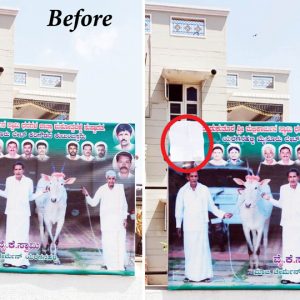In this week’s Pet Talk, Maneka explains how to handle an abandoned baby bird & about treating bee sting
By Maneka Gandhi
I found an abandoned baby bird in our balcony. It has no feathers. I cannot identify it. How should I treat it?
First task is to identify what type of baby bird is it. Whether it is a nestling or fledgling. A nestling has few or no feathers, and if found on the ground, they need your help. These baby birds are too young to leave the nest and are unable to fly. Fledglings are juvenile birds who have a mix of fuzzy down and adult feathers and are learning to fly. You may come across them hopping along on the ground, perching on low-hanging branches, or hiding under bushes, but as long as they’re healthy, just let them be. Healthy fledglings can stand upright and will tuck their wings tightly against their bodies.
If you come across a fallen nestling who isn’t injured, shaking, or weak and you can locate the nest, use clean or gloved hands to place the bird back into the nest quickly. If you can’t see or reach the original nest, make one out of a small basket, kitchen strainer, or small plastic container with holes punched in the bottom. Ideally the “nest” should be cereal-bowl shaped, well-padded with tissue paper, and of a non-slippery material, otherwise the bird’s legs could spread out sideways and become deformed.
Fasten the nest in a sheltered area of the tree closest to the bird’s original location, but out of range of any cats or dogs.
Watch quietly for a few hours to make sure that a parent comes back to feed the nestling. If the parent doesn’t return, then secure the bird by using clean or gloved hands to place the bird inside a cardboard box lined with paper towels.
While you’re working to get help for the animal, keep him or her warm and quiet by placing a heating pad on the lowest setting under half of the box or placing a small hot water bottle inside the box. Then put the box in a closet or another warm, dark, quiet, and safe place, away from people and animals.
Take a picture of the bird and send it to as many wildlife organisations as you know, asking for identification and what food to feed it. In the meantime try mincemeat, worms, small pieces of fruit, like the melon variety, soaked rice or oatmeal. It needs food every hour.
I have got a bee sting. How should I treat it?
Home remedies: 1. Unless you’re allergic to bees, or experiencing signs of a severe allergic reaction, you can treat most bee stings at home.
a) If a honeybee stings you, remove the stinger immediately as this helps curb the amount of toxins released into your skin. Wash the sting site with soap and water. Icing the sting site is the most effective way to reduce venom absorption. It also can help reduce swelling.
b) Using Honey – To treat bee stings with honey, apply a small amount to the affected area. Cover with a loose bandage and leave on for up to an hour.
c) Using Baking Soda – Apply a thick layer of paste of baking soda and water to the affected area. Cover the paste with a bandage. Leave on for at least 15 minutes and re-apply as needed.
d) Using Toothpaste – Alkaline toothpaste neutralises acidic honeybee venom. Simply dab a bit on the affected area.
e) Aloevera is known for soothing the skin and relieving pain.
f) Lavender essential oil has anti-inflammatory abilities and can help relieve swelling. Dilute the essential oil with a carrier oil, such as coconut or olive oil. Dab a few drops of the mixture onto the sting site.
g) Cut a potato in half and apply it to the sting site. It should extract the sting.
h) Application of calamine lotion will also help in dealing with the sting.
Although most people do not experience severe reactions to bee stings, it’s a good idea to keep an eye on anyone who has been stung, in case they develop more serious symptoms. If you notice any signs of an allergic reaction, or if you or someone you know has been stung multiple times — particularly if he or she is a child — seek medical attention immediately







Recent Comments